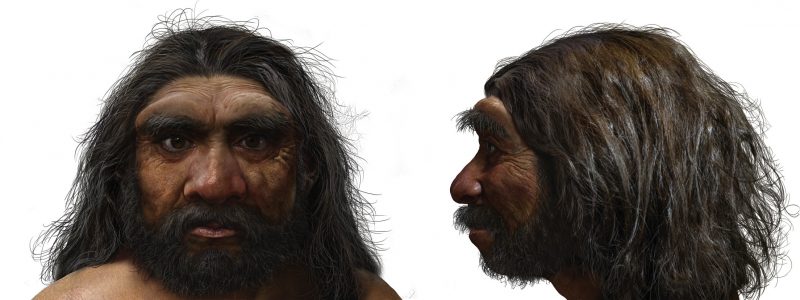In 1933, bridge construction workers in Harbin, a city in Northeastern China, discovered a large and nearly intact skull. The skull was brought to paleoanthropologists in 2018, and after many studies, the researchers announced in late June 2021 that the cranium belonged to a male who lived approximately 146,000 years ago. This skull represents a new human species, the researchers said. They named it Homo longi, or Dragon Man, and said it might be the closest relative to modern humans, Homo sapiens. If so, Dragon Man would replace Neanderthals as the closest kin in our lineage and change what we know of human evolution.
Scientists published their findings in three different studies in the peer-reviewed journal The Innovation on June 25, 2021.
The Harbin cranium
The new species’ name of Homo longi derives from the province where the Harbin cranium was discovered, Heilongjiang. Heilongjiang translates into English as Black Dragon River, which gives the species its nickname of Dragon Man.
The cranium is the largest Homo skull ever found. The large size puts it in the range of modern humans, while other characteristics still separate it from us. The skull has larger, nearly square eye sockets, thick ridges along the brow, a wider mouth and larger teeth. Qiang Ji, a professor of paleontology at Hebei GEO University, explained:
The Harbin fossil is one of the most complete human cranial fossils in the world. This fossil preserved many morphological details that are critical for understanding the evolution of the Homo genus and the origin of Homo sapiens … While it shows typical archaic human features, the Harbin cranium presents a mosaic combination of primitive and derived characters setting itself apart from all the other previously named Homo species.

A day in the life of Dragon Man
According to dating methods, Dragon Man walked the Earth at least 146,000 years ago, during the Middle Pleistocene. He was a large individual, approximately 50 years old, and lived in a small community in a forested, floodplain area. Xijun Ni, a professor of primatology and paleoanthropology at the Chinese Academy of Sciences and Hebei GEO University, said:
Like Homo sapiens, they hunted mammals and birds, and gathered fruits and vegetables, and perhaps even caught fish.

Dragon Man’s large size might have allowed it to adapt to harsh conditions, making it easier for the species to travel and spread throughout Asia. Homo longi and Homo sapiens might have mingled on the continent. Chris Stringer, a paleoanthropologist at the Nature History Museum in London, said:
We see multiple evolutionary lineages of Homo species and populations coexisting in Asia, Africa and Europe during that time. So, if Homo sapiens indeed got to East Asia that early, they could have a chance to interact with H. longi, and since we don’t know when the Harbin group disappeared, there could have been later encounters as well.
A closer relative than the Neanderthals
The discovery of Dragon Man pushes the Neanderthals farther away from us in lineage and moves our common ancestor even farther back in time. Ni said:
It is widely believed that the Neanderthal belongs to an extinct lineage that is the closest relative of our own species. However, our discovery suggests that the new lineage we identified that includes Homo longi is the actual sister group of H. sapiens … The divergence time between H. sapiens and the Neanderthals may be even deeper in evolutionary history than generally believed, over one million years.
It’s possible Homo sapiens diverged from Neanderthals 400,000 years earlier than scientists originally thought.

The discovery of Dragon Man adds another piece of the puzzle to the mystery of evolution on Earth. Ni said:
Altogether, the Harbin cranium provides more evidence for us to understand Homo diversity and evolutionary relationships among these diverse Homo species and populations. We found our long-lost sister lineage.
Bottom line: Scientists have determined that a skull found in China is a new species, which they named Homo longi, or Dragon Man. They believe Dragon Man is the closest relative to modern humans, Homo sapiens.
Source: Geochemical provenancing and direct dating of the Harbin archaic human cranium
Source: Late Middle Pleistocene Harbin cranium represents a new Homo species
https://ift.tt/3jFLZbl
Science
No comments:
Post a Comment